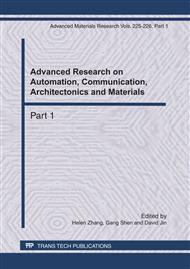p.585
p.589
p.593
p.597
p.601
p.605
p.609
p.614
p.619
Robustness Analysis of QIM Watermarking against Additional Noise
Abstract:
A mutual information function was defined as a criterion measuring the robustness of watermarking algorithm. Considering QIM scheme, error probability of watermarking can be calculated to validate the measurement of mutual information function. By mean of numerical computation, mutual information under Gaussian noise and uniform noise is calculated with change of noise standard deviation. In the experiment, an audio section is selected as the host and their third lever wavelet detail coefficients are quantified according to watermark bit series. Experiment results show that statistic Bit Error Rate (BER) is matched with evaluation conclusion of mutual information method when step is on the small side. Mutual information function can be selected as a cost function to evaluate the robustness of watermarking algorithm, and predict the BER.
Info:
Periodical:
Pages:
601-604
Citation:
Online since:
April 2011
Authors:
Price:
Сopyright:
© 2011 Trans Tech Publications Ltd. All Rights Reserved
Share:
Citation:


